Exploring Medieval Baghdad
Baghdad celebrated its 1,250th birthday this year. It’s been through a lot since it was founded by the Caliph al-Mansour in 762 AD, seeing more than its fair share of invaders come and go. Nowadays, Baghdad shows little of its former glory. It’s a dusty place of crumbling concrete buildings, blast walls, and traffic jams. Look harder, though, and you’ll find some of Baghdad’s former glory still shining through.
I recently visited the city as part of a 17-day trip through Iraq in order to write a series about tourism in Iraq for the travel blog Gadling. I found Baghdad’s most impressive medieval monument to be the Wastani Gate, built during the Abbasid Caliphate in 1221. It’s the last sizable remnant of the wall that once protected the city. It didn’t do a very good job, considering that only 37 years later, in 1258, the Mongols under Hulagu sacked Baghdad. Legend has it that the Tigris River ran red because of all the blood of the slain, and then black from all the manuscripts the Mongols threw into it. There’s nothing left of the once-great library and translation center that the Abbasids set up, the same center of learning that preserved much of the Classical tradition of Europe.
Sadly, the destruction is continuing. Very little is known about al-Mansour’s city. Knowledge of what the city looked like in earlier eras may have been hidden in the Ottoman archives, but they were burned when the National Library was ransacked during the Coalition invasion in 2003.
The gate is located between a slum and a busy highway. Like with all national monuments, a couple of police with Kalashnikovs guard the place and visitors are rare. They were so intrigued by us that they followed us around the ruins.
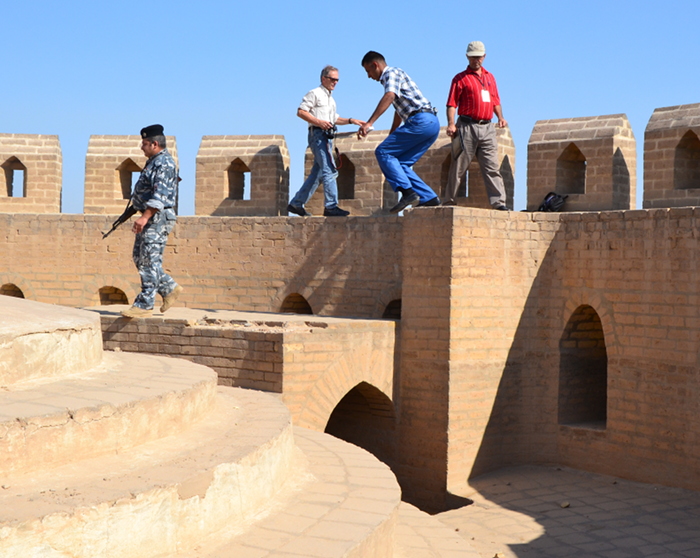
From left to right are: one of the police officers; a travel companion of mine; Captain Ali, an Interior Ministry officer assigned to guard/watch us; and Mohammad, our guide/translator. From the tower we had a commanding view of the surrounding area. I won’t show you the sea of concrete. It would ruin the atmosphere.
Instead I’ll show you Captain Ali looking out pensively from atop the battlements. This gives you an idea of the size of the fortifications the Mongols were up against. Next to it is one of the gateways, showing the fine architecture of the Abbasid era.
Another jewel of Abbasid architecture is the Mustansiriya Madrasa. Established by Caliph al-Mustansir in 1227, it is one of the oldest Islamic universities in the world and managed to survive the Mongol invasion. It’s still functioning in another location, and its historic original buildings are being restored.
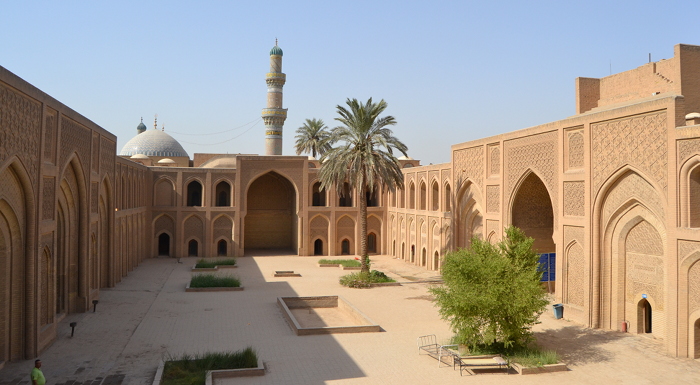
The mosque in the background is from a later period. It’s difficult to take a photo in Baghdad without getting a minaret in the background!
I got to wander around the hallways and rooms surrounding the courtyard. In a more glorious age, they were filled with students from across the known world, studying science, geography, ancient languages, and engineering. At one time there was a water-powered alarm clock that chimed the times for prayer five times a day. Details about this device are sketchy, but it sounds similar to the famous steam-driven tree with singing birds in the Byzantine palace in Constantinople.
Much of the original carving in the madrasa is still well preserved.
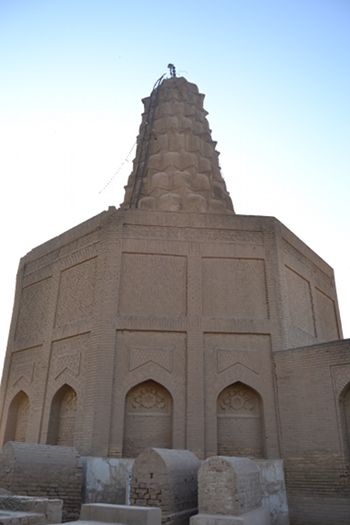 The third great Abbasid monument of Baghdad is the Mausoleum of Zumurrud Khatoun, wife of the Caliph Al-Mustadhi Bi-Amrillah. It was built sometime before 1202 A.D. and features an unusual octagonal base and Seljuk-style dome.
The third great Abbasid monument of Baghdad is the Mausoleum of Zumurrud Khatoun, wife of the Caliph Al-Mustadhi Bi-Amrillah. It was built sometime before 1202 A.D. and features an unusual octagonal base and Seljuk-style dome.
At its base, you can see several tombs, part of a vast cemetery around it. There’s also a modern slum in the neighborhood and as we explored this mausoleum, we had a crowd of ragged kids tagging along behind us.
They were all eager to meet the “Amriki” and practiced their limited English on us, while I practiced my limited Arabic on them. One teenager even showed off his prowess by leaping from the flat roof of the mausoleum to the lower roof on the right. While it looks big, the distance is only about five meters.
Not so brave, you say? Maybe not, but what if he missed?
The interior of the mausoleum was stunning. I wanted to stay all day and watch the shadows change.
Interested in seeing more of Iraq? Check out my continuing travel series, Destination: Iraq, in which I visit mosques, archaeological sites, and souks while meeting Iraqis from all walks of life, from police generals to nine-year-old refugees. Or you can visit Iraq yourself. Like that kid jumping off the mausoleum, it may not be the safest thing in the world to do, but it’s not as dangerous as it looks!
Sean McLachlan is a freelance travel and history writer. He is also the author of the historical fantasy novel A Fine Likeness, set in Civil War Missouri. His historical fantasy novella The Quintessence of Absence, was recently published by Black Gate. Find out more about him on his blog and Amazon author’s page.
All photos copyright Sean McLachlan.
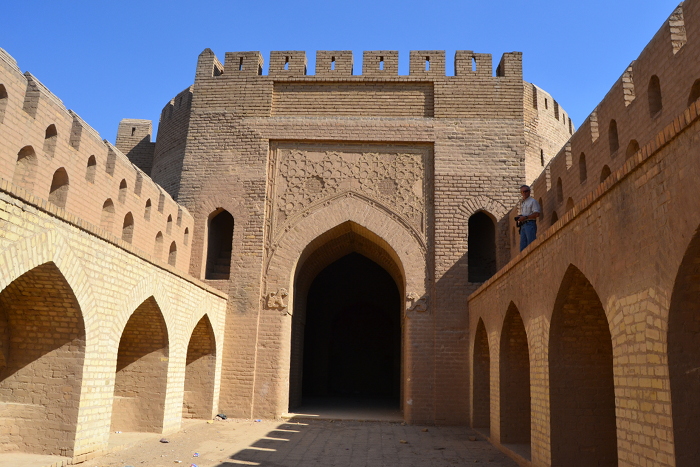
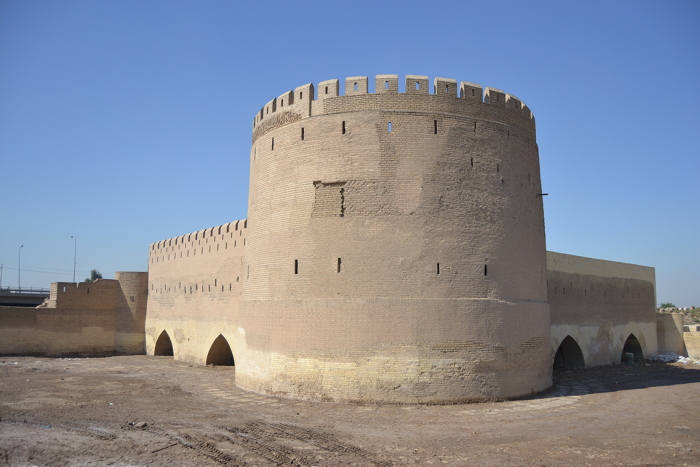
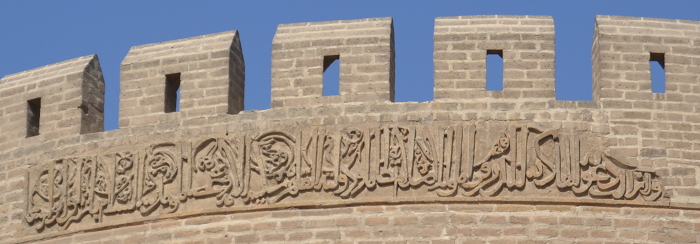
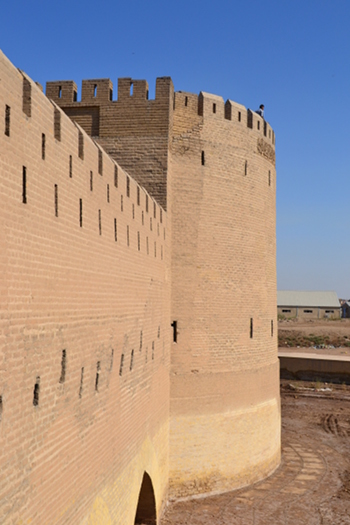
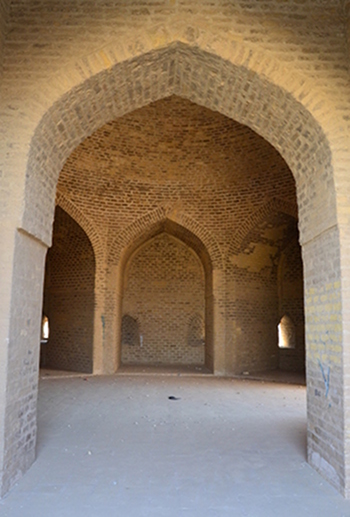
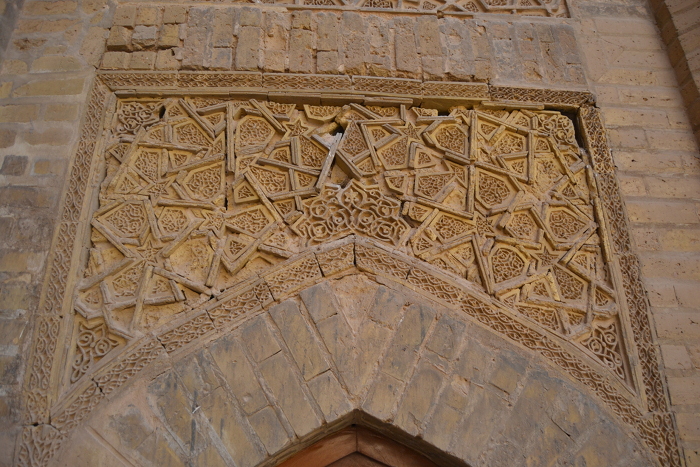
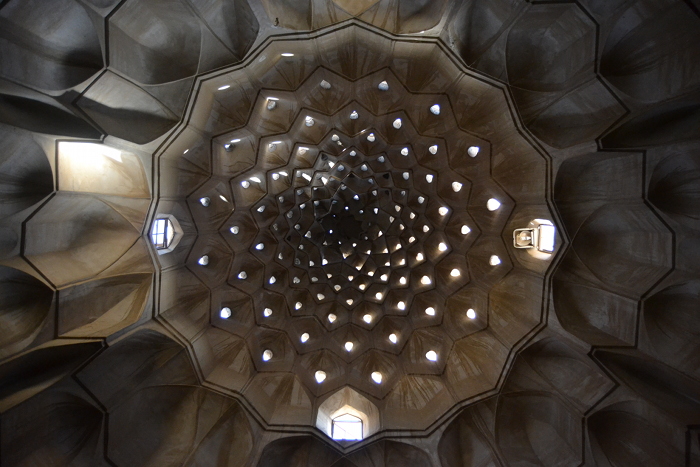
I really enjoyed this post. I also checked out your travel blog. Keep up the good work
[…] a full blog post itself and will be coming up soon. In the meantime, you might like my posts on Exploring Medieval Baghdad and my Spanish Castle Magic […]
[…] I’m afraid you’ll be getting Creative Commons images and not my own pics. I’ll stroll around Baghdad, but you won’t see me visiting Puntland or Somalia anytime […]